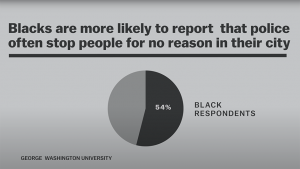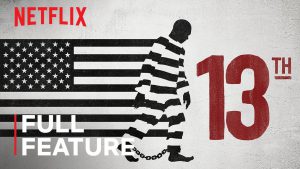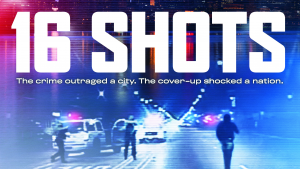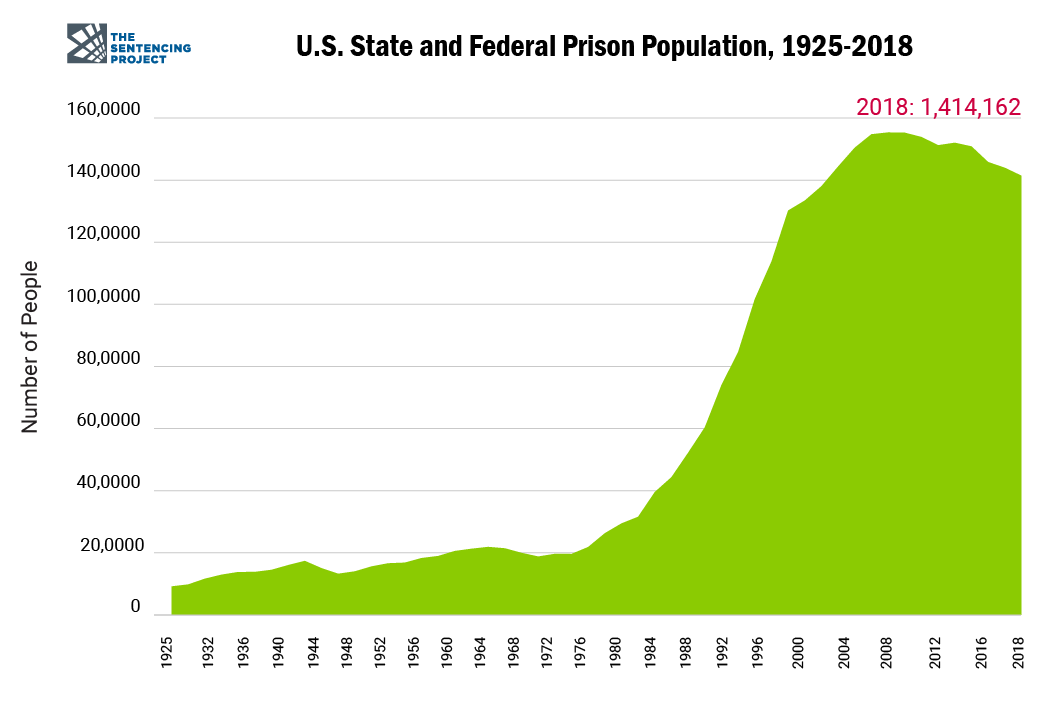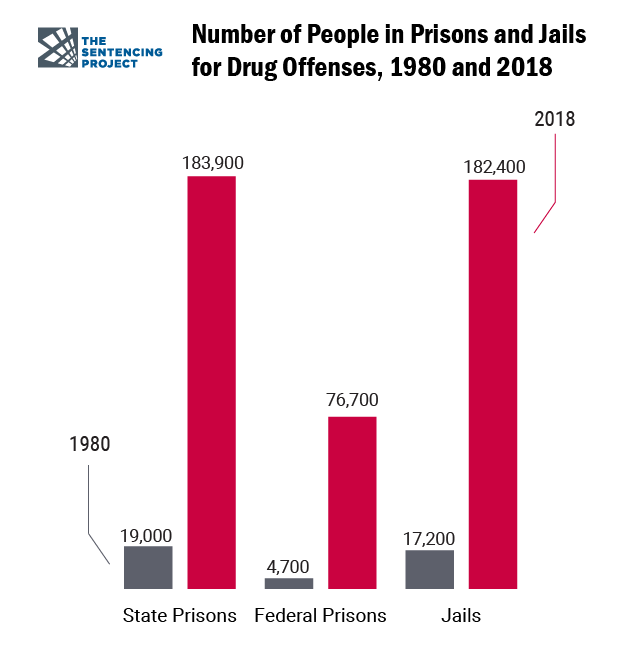“I think the sad fact is, there’s a long history in this country at looking at African-American as subhuman. And I think that’s reflected in the fact that, when we have problems that really are problems of employment, that are really problems of mental health, that are really problems of drugs, our answer is the police.”
⏤Ta-Nehisi Coates
GET STARTED
Watch and read these 4 short introductory videos and articles on criminal justice in the United States.
1
13th: Documentary Trailer
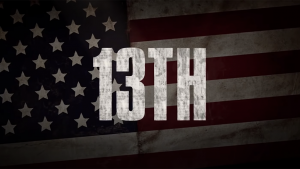
The title of Ava DuVernay’s extraordinary and galvanizing documentary 13TH refers to the 13th Amendment to the Constitution, which reads “Neither slavery nor involuntary servitude, except as a punishment for crime whereof the party shall have been duly convicted, shall exist within the United States.” The progression from that second qualifying clause to the horrors of mass criminalization and the sprawling American prison industry is laid out by DuVernay with bracing lucidity. With a potent mixture of archival footage and testimony from a dazzling array of activists, politicians, historians, and formerly incarcerated women and men, DuVernay creates a work of grand historical synthesis.
[Video: 2:19]
3
How We’re Priming Some Kids for College – and Others for Prison
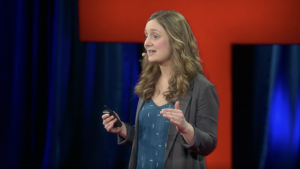
In the United States, two institutions guide teenagers on the journey to adulthood: college and prison. Sociologist Alice Goffman spent six years in a troubled Philadelphia neighborhood and saw first-hand how teenagers of African-American and Latino backgrounds are funneled down the path to prison — sometimes starting with relatively minor infractions. In an impassioned talk she asks, “Why are we offering only handcuffs and jail time?”
[Video: 15:57]
2
We Need to Talk About an Injustice
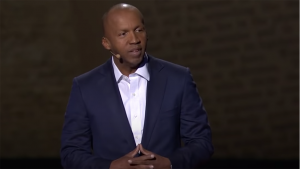
In an engaging and personal talk — with cameo appearances from his grandmother and Rosa Parks — human rights lawyer Bryan Stevenson shares some hard truths about America’s justice system, starting with a massive imbalance along racial lines: a third of the country’s black male population has been incarcerated at some point in their lives. These issues, which are wrapped up in America’s unexamined history, are rarely talked about with this level of candor, insight and persuasiveness. [Video: 23:41]
4
The Opioid Crisis Explained in Black and White

While recreational opioid use increased in white communities, the arrest rate for sale or possession of these drugs was one-quarter the rate of street drugs, like heroin or cocaine, even though the abuse of opioids far exceeded the abuse of heroin.
[Article: approx. 2 min to read]
GO DEEPER
Grow in your understanding of how the criminal justice system developed and the impacts felt today by reading/viewing these additional resources.
Jump to: Is the System Broken? / Black Criminality/ Media Bias and Criminality / Racial Bias in Policing and Incarceration / Who Profits from Prison Industry / The Power of Prosecutors / Impact of Pre-trial incarceration and Plea Deals / Institutional Issues in Policing/Police Culture / Personal Experiences /Perspectives on Police Reform / Films / Books / Get Involved
Is the System Broken?
Is Our Criminal Justice System Broken? — A group of senators, police commissioners, professors, activists, and authors were asked to comment on the state of law enforcement in America. [Video 2:33]
 Mass Incarceration Visualized — In this animated interview, the sociologist Bruce Western explains the current inevitability of prison for certain demographics of young black men and how it’s become a normal life event. “We’ve chosen the response of deprivation of liberty for a historically aggrieved group, whose liberty was never fully established to begin with.” [Video: 2:33]
Mass Incarceration Visualized — In this animated interview, the sociologist Bruce Western explains the current inevitability of prison for certain demographics of young black men and how it’s become a normal life event. “We’ve chosen the response of deprivation of liberty for a historically aggrieved group, whose liberty was never fully established to begin with.” [Video: 2:33]
 Criminal Justice Facts — There are 2.2 million people in the nation’s prisons and jails—a 500% increase over the last 40 years. Changes in law and policy, not changes in crime rates, explain most of this increase. [Article: approx 2 min to read]
Criminal Justice Facts — There are 2.2 million people in the nation’s prisons and jails—a 500% increase over the last 40 years. Changes in law and policy, not changes in crime rates, explain most of this increase. [Article: approx 2 min to read]
Black Criminality
 The Enduring Myth of Black Criminality — There is a long history of dealing with problems within the African-American community through the criminal justice system, leading to the enduring view that as a race of people they are prone to criminality. [Video 3:15]
The Enduring Myth of Black Criminality — There is a long history of dealing with problems within the African-American community through the criminal justice system, leading to the enduring view that as a race of people they are prone to criminality. [Video 3:15]
Contracts Show 1800’s Prisoner Leasing System — Contracts from the 1800’s were uncovered in Texas that open a window into a dark period of state history concerning the convict leasing system in place at the turn of the century. [Video: 3:12]
”
Media Bias and Criminality
Media Bias in Mug Shots — One news organization. Two crime stories. Two groups of suspects from different races. And two very different types of images. [Article: approx 2 min to read]
 Why Accurate Coverage of Crime Matters — What people see and hear in the media has a tremendous effect on their lives from the schoolhouse to the courthouse. [Video: 1:31]
Why Accurate Coverage of Crime Matters — What people see and hear in the media has a tremendous effect on their lives from the schoolhouse to the courthouse. [Video: 1:31]1
Racial Bias in Policing and Incarceration
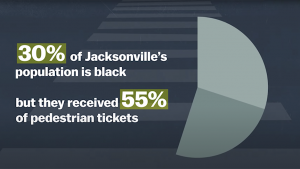 Walking While Black — Jacksonville’s enforcement of pedestrian violations raises concerns about another example of racial profiling. [Video 7:58]
Walking While Black — Jacksonville’s enforcement of pedestrian violations raises concerns about another example of racial profiling. [Video 7:58]
Racism and Policing in Ten Charts — Ten charts break down the divide in criminal justice among the black and white American experience. [Video: 1:47]
Who Profits from the Prison Industry?
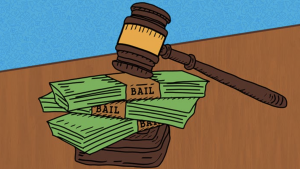 How Private Companies are Profiting from Mass Incarceration — Mass incarceration isn’t only unjust—it’s big business. Bail bonds, prison phone companies, prison commissaries with inflated prices, and health care companies – just to name a few – are some of the ways locking lots of people up is making lots of money for lots of businesses. [Article: approx 2 min to read]
How Private Companies are Profiting from Mass Incarceration — Mass incarceration isn’t only unjust—it’s big business. Bail bonds, prison phone companies, prison commissaries with inflated prices, and health care companies – just to name a few – are some of the ways locking lots of people up is making lots of money for lots of businesses. [Article: approx 2 min to read]
The Power of Prosecutors
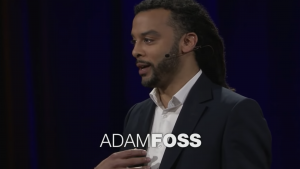 A Prosecutor’s Vision for a Better Justice System — When a kid commits a crime, the US justice system has a choice: prosecute to the full extent of the law, or take a step back and ask if saddling young people with criminal records is the right thing to do every time. In this searching talk, Adam Foss, a prosecutor with the Suffolk County District Attorney’s Office in Boston, makes his case for a reformed justice system that replaces wrath with opportunity, changing people’s lives for the better instead of ruining them. [Video 15:57]
A Prosecutor’s Vision for a Better Justice System — When a kid commits a crime, the US justice system has a choice: prosecute to the full extent of the law, or take a step back and ask if saddling young people with criminal records is the right thing to do every time. In this searching talk, Adam Foss, a prosecutor with the Suffolk County District Attorney’s Office in Boston, makes his case for a reformed justice system that replaces wrath with opportunity, changing people’s lives for the better instead of ruining them. [Video 15:57]
s
Impact of Pre-trial Incarceration and Plea Deals
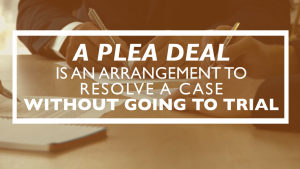 Plea Deals — A plea deal is an arrangement to resolve a case without going to trial. This is an option most often taken by those who cannot afford bail and want to go home instead of wait days, months, even years locked up in jail. An estimated 177,624 innocent Americans pleaded guilty in 2013 alone. [Video: 6:20]
Plea Deals — A plea deal is an arrangement to resolve a case without going to trial. This is an option most often taken by those who cannot afford bail and want to go home instead of wait days, months, even years locked up in jail. An estimated 177,624 innocent Americans pleaded guilty in 2013 alone. [Video: 6:20]
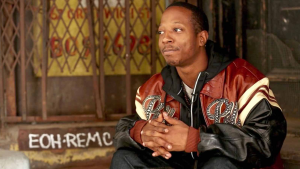 Time: Kalief Browder Story — This documentary tracks the reality of how a young man died because of a backpack, exposing the the inhumane practice of pre-trial detention and the impact this can have on the lives caught up in this system of locking away individuals before they have been convicted of a crime. Available on Netflix, the program gives viewers an inside look at the case. [Article: approx. 3 min to read]
Time: Kalief Browder Story — This documentary tracks the reality of how a young man died because of a backpack, exposing the the inhumane practice of pre-trial detention and the impact this can have on the lives caught up in this system of locking away individuals before they have been convicted of a crime. Available on Netflix, the program gives viewers an inside look at the case. [Article: approx. 3 min to read]
Institutional Issues in Policing/Police Culture
The Fatal Mismatch at the Heart of American Policing — We train police to be warriors and then send them out to be social workers. Roge Karma spoke with a dozen current and former police officers, police reformers, legal scholars, and criminologists to better understand this fatal mismatch at the heart of American policing, and what it would take to fix it. [Article: approx. 15 min to read]
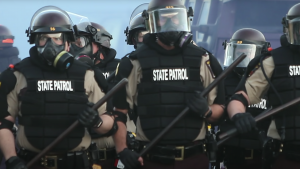 Why Police Look Like Soldiers — Across the country, Americans protesting racial injustice and police brutality – the overwhelming majority of them peacefully – have been met by police forces that look more like an army. Officers have shown up to protests with riot gear, armored trucks, and military rifles. This is what America’s police now look like, and it’s the result of a decades-long buildup of military equipment among the country’s police departments. [Video: 8:05]
Why Police Look Like Soldiers — Across the country, Americans protesting racial injustice and police brutality – the overwhelming majority of them peacefully – have been met by police forces that look more like an army. Officers have shown up to protests with riot gear, armored trucks, and military rifles. This is what America’s police now look like, and it’s the result of a decades-long buildup of military equipment among the country’s police departments. [Video: 8:05]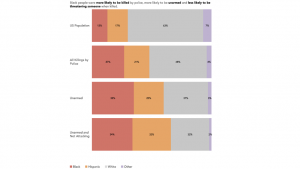 2017 Police Violence Report — Compiling information from media reports, obituaries, public records, and databases like Fatal Encounters and the Washington Post, this report represents the most comprehensive accounting of deadly police violence in 2017. [Gallery: Approx 10 min to read]
2017 Police Violence Report — Compiling information from media reports, obituaries, public records, and databases like Fatal Encounters and the Washington Post, this report represents the most comprehensive accounting of deadly police violence in 2017. [Gallery: Approx 10 min to read].
Personal Experiences
 Driving While Black — Robert Wilkins, a judge in the United States Court of Appeals for the District of Columbia Circuit, says his personal experiences with racism and as a public defender inspired him to get involved in the effort to build the Smithsonian’s National Museum of African American History and Culture. [Video: 1:23]
Driving While Black — Robert Wilkins, a judge in the United States Court of Appeals for the District of Columbia Circuit, says his personal experiences with racism and as a public defender inspired him to get involved in the effort to build the Smithsonian’s National Museum of African American History and Culture. [Video: 1:23]
 Say Her Name — “The failure to highlight and demand accountability for the countless Black women killed by police over the past two decades, including Eleanor Bumpurs, Tyisha Miller, LaTanya Haggerty, Margaret Mitchell, Kayla Moore, and Tarika Wilson, to name just a few among scores, leaves Black women unnamed and thus under-protected in the face of their continued vulnerability to racialized police violence”. *Individual stories start on page 8 [Article: 48 pages]
Say Her Name — “The failure to highlight and demand accountability for the countless Black women killed by police over the past two decades, including Eleanor Bumpurs, Tyisha Miller, LaTanya Haggerty, Margaret Mitchell, Kayla Moore, and Tarika Wilson, to name just a few among scores, leaves Black women unnamed and thus under-protected in the face of their continued vulnerability to racialized police violence”. *Individual stories start on page 8 [Article: 48 pages]
s
Perspectives on Police Reform
 Reimagining Police Training — In 2015 to 2019 more than 5,500 people were killed by US law enforcement. Officers play a critical role within our communities, but many of these incidents can be linked to a series of training failures from inadequate minimum training hours to militarized “Warrior-Cop” style training that many training academies continue to promote. This site provides training statistics and outlines ways to bridge the gap between communities and law enforcement. [Article: Approx 3 min to read]
Reimagining Police Training — In 2015 to 2019 more than 5,500 people were killed by US law enforcement. Officers play a critical role within our communities, but many of these incidents can be linked to a series of training failures from inadequate minimum training hours to militarized “Warrior-Cop” style training that many training academies continue to promote. This site provides training statistics and outlines ways to bridge the gap between communities and law enforcement. [Article: Approx 3 min to read]
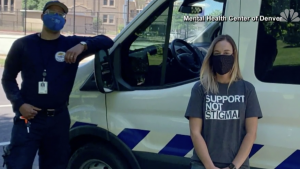 Program Alternatives to Police Involvement — Sweeping police reforms are growing in popularity among Americans, according to a recent survey by Reuters and research firm Ipsos. But what will that look like? [Video: 1:39]
Program Alternatives to Police Involvement — Sweeping police reforms are growing in popularity among Americans, according to a recent survey by Reuters and research firm Ipsos. But what will that look like? [Video: 1:39]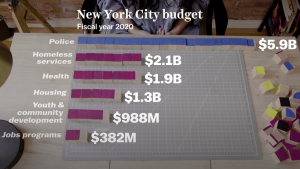 What “Defund the Police” Really Means — The disparities between policing budgets and those of other city agencies are massive. And while defunding the police might sound radical, it’s a policy activists have been talking about for decades. [Video: 10:46]
What “Defund the Police” Really Means — The disparities between policing budgets and those of other city agencies are massive. And while defunding the police might sound radical, it’s a policy activists have been talking about for decades. [Video: 10:46]
Films
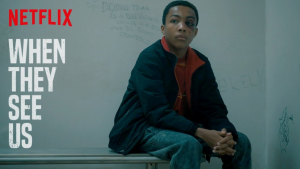 When They See Us — Based on a true story that gripped the country, When They See Us will chronicle the notorious case of five, labeled the Central Park Five, who were convicted of a rape they did not commit. [Documentary trailer 2:58]
When They See Us — Based on a true story that gripped the country, When They See Us will chronicle the notorious case of five, labeled the Central Park Five, who were convicted of a rape they did not commit. [Documentary trailer 2:58]
13th — Combining archival footage with testimony from activists and scholars, director Ava DuVernay’s examination of the U.S. prison system looks at how the country’s history of racial inequality drives the high rate of incarceration in America. [Video: 1:40:02]
16 Shots — Examines the 2014 shooting of 17-year-old Laquan McDonald by Chicago police officer Jason Van Dyke and the cover-up that ensued. [Documentary trailer: 2:19]
t
Books
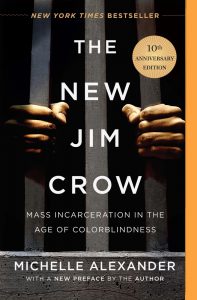 The New Jim Crow — The New Jim Crow is a stunning account of the rebirth of a caste-like system in the United States, one that has resulted in millions of African Americans locked behind bars and then relegated to a permanent second-class status—denied the very rights supposedly won in the Civil Rights Movement. [Book 352 pages]
The New Jim Crow — The New Jim Crow is a stunning account of the rebirth of a caste-like system in the United States, one that has resulted in millions of African Americans locked behind bars and then relegated to a permanent second-class status—denied the very rights supposedly won in the Civil Rights Movement. [Book 352 pages][Article: 10 years after The New Jim Crow]
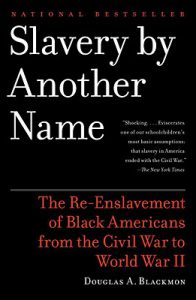 Slavery by Another Name — A Pulitzer Prize-winning account of the “Age of Neoslavery,” the American period following the Emancipation Proclamation in which convicts, mostly black men, were “leased” through forced labor camps operated by state and federal governments. [Book 468 pages]
Slavery by Another Name — A Pulitzer Prize-winning account of the “Age of Neoslavery,” the American period following the Emancipation Proclamation in which convicts, mostly black men, were “leased” through forced labor camps operated by state and federal governments. [Book 468 pages]
[Video: The Bricks We Stand On]
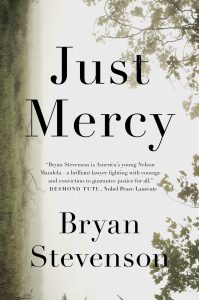 Just Mercy — Just Mercy is a powerful true story about the potential of mercy to redeem us, and a clarion call to fix our broken system of justice. One of the most brilliant attorneys of our time, Bryan Stevenson gives us an unforgettable account of an idealistic, gifted young lawyer’s coming of age, a moving window into the lives of those he has defended, and an inspiring argument for compassion in the pursuit of true justice. [Book 368 pages]
Just Mercy — Just Mercy is a powerful true story about the potential of mercy to redeem us, and a clarion call to fix our broken system of justice. One of the most brilliant attorneys of our time, Bryan Stevenson gives us an unforgettable account of an idealistic, gifted young lawyer’s coming of age, a moving window into the lives of those he has defended, and an inspiring argument for compassion in the pursuit of true justice. [Book 368 pages]
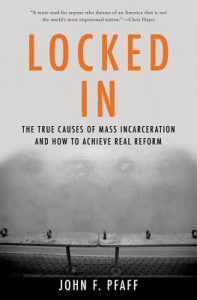 Locked In: The True Causes of Mass Incarceration and How to Achieve Real Reform — A groundbreaking reassessment of the American prison system, challenging the widely accepted explanations for our exploding incarceration rates.
Locked In: The True Causes of Mass Incarceration and How to Achieve Real Reform — A groundbreaking reassessment of the American prison system, challenging the widely accepted explanations for our exploding incarceration rates.
In Locked In, John Pfaff argues that the factors most commonly cited to explain mass incarceration — the failed War on Drugs, draconian sentencing laws, an increasing reliance on private prisons — tell us much less than we think. Instead, Pfaff urges us to look at other factors, especially a major shift in prosecutor behavior that occurred in the mid-1990s, when prosecutors began bringing felony charges against arrestees about twice as often as they had before. [Book 320 pages]
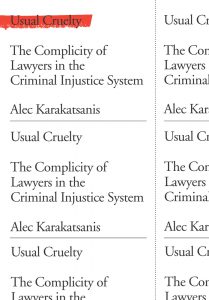 Usual Cruelty: The Complicity of Lawyers in the Criminal Injustice System — Former public defender Alec Karakatsanis is interested in what we choose to punish. For example, it is a crime in most of America for poor people to wager in the streets over dice; dice-wagerers can be seized, searched, have their assets forfeited, and be locked in cages. It’s perfectly fine, by contrast, for wealthier people to wager over international currencies, mortgages, or the global supply of wheat. He is also troubled by how the legal system works when trying to punish people. The bail system, for example, was meant to ensure that people return for court dates, but it has morphed into a way to lock up poor people who have not been convicted of anything. [Book 208 pages]
Usual Cruelty: The Complicity of Lawyers in the Criminal Injustice System — Former public defender Alec Karakatsanis is interested in what we choose to punish. For example, it is a crime in most of America for poor people to wager in the streets over dice; dice-wagerers can be seized, searched, have their assets forfeited, and be locked in cages. It’s perfectly fine, by contrast, for wealthier people to wager over international currencies, mortgages, or the global supply of wheat. He is also troubled by how the legal system works when trying to punish people. The bail system, for example, was meant to ensure that people return for court dates, but it has morphed into a way to lock up poor people who have not been convicted of anything. [Book 208 pages]
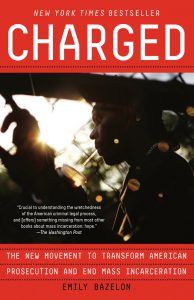 Charged: The New Movement to Transform American Prosecution and End Mass Incarceration — The American criminal justice system is supposed to be a contest between two equal adversaries, the prosecution and the defense, with judges ensuring a fair fight. That image of the law does not match the reality in the courtroom, however. [Book 448 pages]
Charged: The New Movement to Transform American Prosecution and End Mass Incarceration — The American criminal justice system is supposed to be a contest between two equal adversaries, the prosecution and the defense, with judges ensuring a fair fight. That image of the law does not match the reality in the courtroom, however. [Book 448 pages]
GET INVOLVED
Be a part of the call to action against criminal system injustices. The following are just a few of many organizations dedicated to justice reform:
Inmates to Entrepreneurs
Our mission is to assist people with criminal backgrounds in starting their own businesses by providing practical entrepreneurship education.
Policing Equity
Center for Policing Equity works directly with police to measure behaviors and revise policies, resulting in fewer people killed and fewer people in jail.
Prosecutor Impact
Prosecutor Impact works to improve outcomes for millions of people impacted by the U.S. criminal justice system through use of training, technology, and better data.
Worth Rises
Partnering with directly impacted people, we work to expose the commercialization of the criminal legal system and advocate to protect and return the economic resources extracted from affected communities.
The North Carolina Community Bail Fund of Durham fight to end cash bail and provides assistance for those that cannot afford it.


